According to the prediction of the China Electric Power Enterprise Association, the electricity shortages in the six provinces and cities of Hubei, Hunan, Jiangxi, Henan, Anhui and Chongqing in central China will reach 15 million kilowatts this year, which is the biggest gap in history. The reporter noted that at present, the coal inventory of some power companies has far exceeded the regulatory requirements of 15 days, and some even only 3 days.
In the absence of electricity, this seasonal “kidnapping†of the “criminal culprits†of many industrial enterprises re-entered the stage at the time of winter. The following ancient propositions still remain: Who should be responsible for the “electricity shortage†that occurs several times a year?
The status of thermal power plants: The most profitable central enterprises will be born Yesterday, a news spread like wildfire: Datang Group's 30 power plants have debt ratios of more than 100%, serious insolvency; the rest is also in the 80% - 90% of the abnormal The level exceeded the normal debt ratio of 70% in the thermal power industry. If not relying on bank loans to support hard, once the central enterprises "big tyrants" have come to the "closed out of business" on the edge. At present, coal-fired power plants have an average coal inventory of only 5 or 6 days of power generation, which is not only far below the 15-day normal inventory, but also below the 7-day minimum warning level. Datang Group, which has a loss of 67%, has lost more than 3 billion yuan during the year and is expected to exceed 4 billion yuan in the whole year. It is likely to become the “most lose money†central enterprise. The other four major power generation groups, such as Huaneng, Guodian, Huadian, and China Power Investment Corporation, are also in deep losses. According to industry estimates, the total loss of thermal power in the past three years exceeded 100 billion yuan.
Voice: It's the scourge of splinting!
"From the perspective of capacity, it may not be possible to lose electricity. Now the machines are better than before, and the utilization hours are not high, because many power plants consciously shut down some of the units." A Huaneng International person frankly told reporters that in order to avoid more production losses The vicious circle, "Our coal prices are rising in the market, and the on-grid tariffs sold to power grid companies are subject to policy controls, and power plants are completely clamped by high coal prices."
The reporter noted that since 2009 Qinhuangdao thermal coal prices have risen to a historical high of 1,000 yuan/ton, the coal market has completely turned into a seller's market, and the settlement method has changed from the previous "first coal, power generation after payment" to "first." Payment, then coal power generation."
Due to the tight funding chain of most thermal power plants, the payment has to be delayed due to breach of contract. The latter payment method is equivalent to disguised price increase.
The report of the reporter from the State Grid Energy Research Institute shows that in 2008, the power industry’s losses amounted to 85 billion yuan, and the debt ratio also rose rapidly. In the same year, the coal enterprises above designated size realized profits of 210 billion yuan. Has become heated.
The status of coal companies: More than 90% of the first three quarters to make money directly against the depression of the power plant is the brilliant performance of listed coal companies. According to statistics from the Research Center of Coal Listed Companies of the China Coal Economic Research Institute of the Central University of Finance and Economics, the total profit of listed companies in the 39 coal industries in the first three quarters of the year was 110.3 billion yuan, an increase of 17.5% year-on-year; the average earnings per share of 0.64 yuan was higher than that of Shanghai and Shenzhen stock exchanges. The company’s average figure is twice as high.
As a benchmark for the Chinese coal market, the price of thermal coal in the Bohai Sea has been maintained at a record high since the index was issued for three consecutive weeks. Qinhuangdao Maritime Coal Network Index Center on the 9th showed that the comprehensive average price of 5500 kcal thermal coal was 853 yuan/ton, which has broken the highest level of the index's operation for more than a year. Prior to this, the price index kept rising for four consecutive periods and the overall price rose 24 yuan/ton. Compared with the same period, it rose by 70 yuan/ton. Due to the shortage of coal resources, coal users in Hubei, Hunan, and Shandong provinces have had to open shipping coal routes and purchase coal from ports such as Qinhuangdao. Take Enshi, Hubei Province as an example, the calorific value of 5,500 kcal, half bituminous coal has risen for two consecutive times in October, and the overall increase has reached 50 yuan/ton, and the total pit ticket price is now as high as 750 yuan/ton.
Voice: The lowest level of employee income!
Yesterday, a veteran of the coal industry for more than a decade responded to reporters. “The per capita income of workers in the power industry is 4-5 times higher than that of the coal industry. Is there any possibility that the cost information they claim is based on the loss?â€
The reporter read through the annual report and found Huadian International as an example. As of the end of 2010, the company had a total of 21,283 employees, an increase of 3,225 people compared to the end of 2009. However, in the “Consolidated Statement of Cash Flowâ€, it can be seen that “expenditure is paid to employees and for employees. The cash added 321 million yuan over the previous year. This is equivalent to about 100,000 yuan per capita "into the hands" of wages in 2009, but also slightly increased in 2010. However, this only refers to the cash actually spent by the company. For the salaries and bonuses that the company has accrued but did not pay, the debt-to-employee payroll table at the moment is listed. In 2010, this amount added a total of 2.131 billion yuan.
Huaneng International also approximated the situation. The company had 33,811 employees in 2010, an increase of 224 from the end of 2009. The “Cash Expenditure to Staff and Workers, Social Security and Educational Funds, etc.†account showed an increase of 426 million yuan. yuan. Excluding the staff's assessment of the increase in the number of employees, the four major power generation collectives did not drop their wages to employees at the end of the year. In addition, due to the fact that the downstream energy “rich man†national power grid and China Southern Power Grid are not directly listed, the income of the executives and employees of the two major power supply groups is still very much in the dark. Coal experts stressed that coal itself is a non-renewable energy source. In the past, the valuation was low. After the “market coal†mechanism was implemented, prices returned to normal levels.
The status quo of the power grid company: 65% of the industry's revenue has been circumvented by all kinds of criticisms of “coal power, top-of-the-line bullâ€. As the power companies cry poorly and the coal companies hold up, they gradually shift downstream. Last year, a set of official data even let the market focus on the power grid company: According to an announcement from the National Bureau of Statistics, in the first 11 months of 2010, the power grid realized operating revenue of 2.19 trillion yuan, accounting for 65% of the entire power industry; total profit It reached 59.2 billion yuan, an increase of 1828% year-on-year, and the industry accounted for 42%.
Whether the grid wealth should be responsible for the power shortage? According to the reporter, for a long time, the cost calculation and expenditure of power transmission and distribution in the power grid has always been one of the most mysterious domains of power grid companies, and the ambiguity in the cost has also made the profit space unclear.
Fan Bizi, deputy director of the Policy Research Office of the State Council, told the media that the reasonable cost of power transmission and distribution in the power grid generally includes technical costs, personnel wages, and management costs. However, in the actual accounting of power grids, cross-subsidies and sales links that cannot be explained clearly are various. The form of fees is also added, and these additional costs are ultimately reflected in the sales price of the terminal on the distribution side, resulting in a large spread between the on-grid price and the sales price, and there is a certain “gray space†in the cost and profit composition of the grid companies.
Voice: There is no profit!
For the public questioning, Shu Yinhao, deputy general manager of the State Grid, once clearly stated that the State Grid has 2 trillion assets and the profit of 40 billion is not high. The power shortage is mainly caused by the tension between the power supply and demand, and it has no relationship with the profit of the power grid. There is a problem of profit.
However, such a response is difficult to block the mouth. Due to the extremely opaque cost information, there is no convincing basis for supervision of distribution costs. According to the information from the State Electricity Regulatory Commission, the average transmission and distribution price of domestic grid companies last year did not include line losses. It was 160.91 yuan/kilowatt-hour, accounting for 28.15% of the sales price.
Take Gansu's China-China Transaction (the main transmission channel is Debao DC) as an example. During the transaction process in 2010, the Gansu Provincial Electric Power Company charged transmission fees at 30 yuan/kilowatt-hour, and Shaanxi Provincial Electric Power Company received 1.45% net loss. Northwest China Power Grid Corporation charges transmission fees at RMB 24/kwh, State Grid Corporation collects transmission fees at RMB 46/kwh and receives an online loss of 5.31%, and Huazhong Grid Company charges transmission fees at RMB 24/kwh, The total transmission price of power grid companies in the home reaches 124 yuan/kwh. If you include the Depot capacity tariff sharing and network loss at all levels, the intermediate transaction cost will be as high as RMB 160/kwh.
◎ The reporter's notes are in the public's suspicion that the “mutual encounter†between the power generation company and the coal company is on schedule. In the coal power "top cattle" can not be handed over, the grid surface of profits from the surface of the more complicated situation.
Listening to the voices of coal companies, power plants, and power companies, they seem to be in their own right and have their own difficulties. Under the meticulous investigation, under the pattern of “market coal and planned electricity,†coal companies that bury “earning money†and power plants that shout “lose money†have indeed encountered the transition period of power reform.
As coal companies say, "make money" is not necessarily unreasonable, and it cannot be used as a basis for "transferring profits." Because of the huge profits of the intermediate links, the heavy cost burden on the power plant does not all come from high coal prices. For example, the extra price of railway transportation, the increasing taxation of coal, and the various fees and charges of various items will eventually be passed on to thermal power companies. Of the cost of electricity generation.
However, it is an indisputable fact that the grid companies, as oligarchs, hold power trading and trading rights, and that they are subject to opaque transmission costs and employee remuneration. Whether it is to withdraw from the tide or to be brave enough to advance? In the chain of interests twisted by the three major groups, the power reform of chess to the middle plate is facing a choice.
23.6 Inch All In One Touch PC main data:
1. Display: 23.6 inch Projected Capacitive Touch Screen
2. Aspect Ratio: 16:9
3. Max. Resolution: 1920 * 1080 IPS Panel
4. Dot Pitch: 0.272×0.272 mm
5. Contrast Ratio: 1000:1
6. Brightness (nits): 250
7. Display Color (Max): 16.7M
8. Viewing angel: 78º/78º/78º/78º
9. OSD language: English
10. Configuration: A64 Main board, RAM: 1G (Standard); ROM: 8G (Standard)
11. Ethernet port: 10/100M adaptive RJ45 port*1
12. USB port: USB HOST*2 (Main board*1; Mini board *1); USB OTG*1
13. Input power: 110~240V 50HZ/60HZ
14. Rated power: <50W
15. Assembling: Bracket (Standard)
Optional:
Main board: A83
RAM: 1G (2 GB, 4GB optional)
ROM: 8G (16GB, 32GB optional)
Built-in high fidelity speaker(8Ω5W*2)
Camera: 500M pixel (Wide viewing angel)
Assembling: VESA wall mount
Functional Characteristics
1. Video synchronization: Audio and video synchronization; Program fast switching.
2. Deployment management: Distributed deployment; Centralized management.
3. Real-time play: Real-time setting and modification of audio and video, pictures, text and multimedia contents.
4. Full support: Various conventional audio and video formats and support for 1920 * 1080 HD display.
5. Multiple subtitles: Support Chinese and English rolling subtitles; Multi subtitles scroll direction and mode selection.
6. Program customization: Control program play list and play mode by program.
7. Easy playing: Support local downloading and streaming media playback mode.
8. Smart play: The player will automatically play the specified program list, which will support the timing of dormancy and recovery.
9. Support network: Multiple ways like Ethernet, 3G or wireless network.
10. Remote management: Remote program transmission and management which can monitor the working status of a large number of players in real time.
11. Remote upgrade: Support OTA remote upgrade without technical personnel to the player terminal to operate
12. System: Original ecosystem Android5.1 or above system; Open root access, can be customized for development
13. High integration: Set an LVDS/USB/WAN/HDMI/VGA/CVBS/SATA/WIFI/WCDMA; Simplify the machine design; Support insert SD card and connect SATA hard disk.
14. High definition: Support LVDS signal LCD display with or below resolution of 1920*1080. Better demodulation of various input signals, including powerful audio and video processing functions which an output high-quality images and sound quality.
15. Super video codec: Supports Full HD (1920*1080P) video decoding; Supports AVI, MPG, RM, RMVB, FLV, MP4, VOB, WMV, MKV and other formats.

Other sizes touch PCs are optional: 10.1 inch, 13.3 inch, 15 inch, 15.6 inch, 18.5 inch, 21.5 inch, 23.6 inch, 24 inch, 27 inch and 31.5 inch.
Shenzhen Bolinia Technology Co., Ltd. is a manufacturer for 7-24 inch lcd monitors and displays over 10 years. Original factory with assembling line in Shenzhen. Product ranges from plastic monitor, Metal Monitor , Resistive Touch Monitor , Capacitive Touch Monitor, Open Frame Monitor , Embedded Monitor to SDI Broadcasting Monitor. Square monitor or wide screen monitors are available with different resolutions. Newly launched 10.1-32 inch All in One PC and portable LCD monitors.
Plastic or metal casing monitor from 7 inch to 24 inch.
Single Touch Monitor with resistive 4 wire and 5 wire for options from 7 inch to 22 inch.
Multi-touch projected capacitive touch ( PCAP Touch or PCT) monitor from 8 inch to 24 inch.
SDI monitor from 15 inch to 21.5 inch.
High Brightness Monitor from 10 inch to 22 inch.
Mirror Image Monitor with size: 8 inch, 9.2 inch, 10.4 inch, 12.1 inch, 15 inch, 17 inch, 19 inch, 20.1 inch and 22 inch.
All In One PC with Android system with 10.1 inch, 13.3 inch, 15 inch, 15.6 inch, 18.5 inch, 21.5 inch, 23.6 inch, 24 inch, 27 inch and 31.5 inch.
Portable LCD Monitor with 12.5 inch, 13.3 inch and 15.6 inch.
Products mainly used in ATM, POS, CCTV security, Information checking, Kiosk, BGA repairing station, Lottery terminals, microscopes and similar applications. Portable LCD monitors perfectly compatible to PS4/PS3/PS2/Xbox ONE/Xbox 360, game consoles, PCs, Macs, Raspberry Pi, laptops, cameras and tablets.
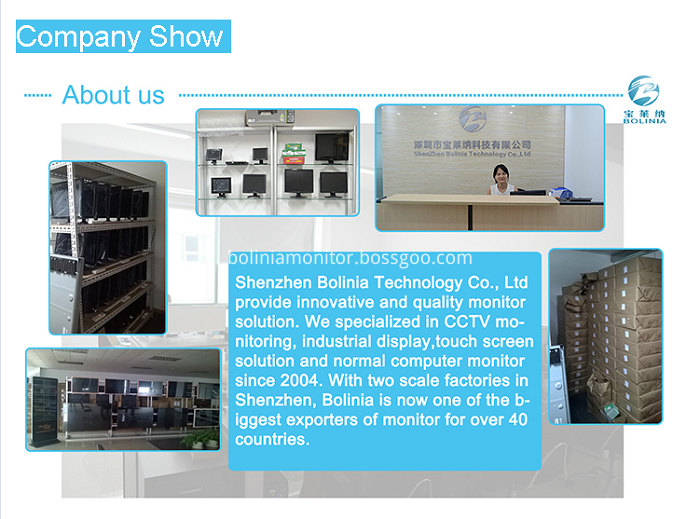
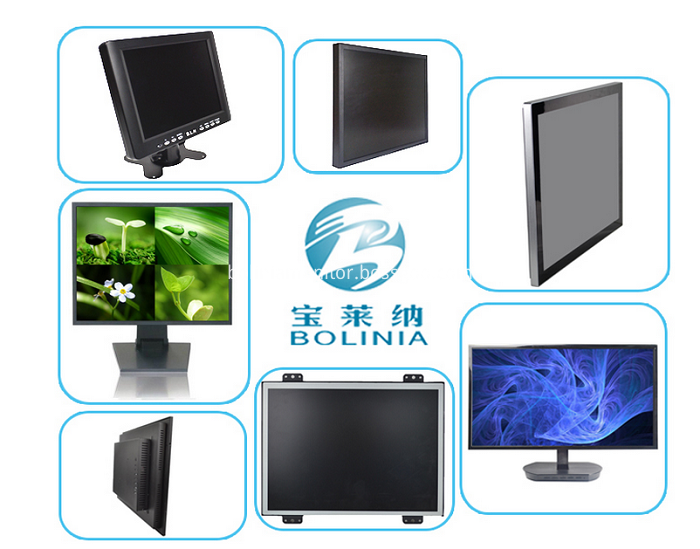



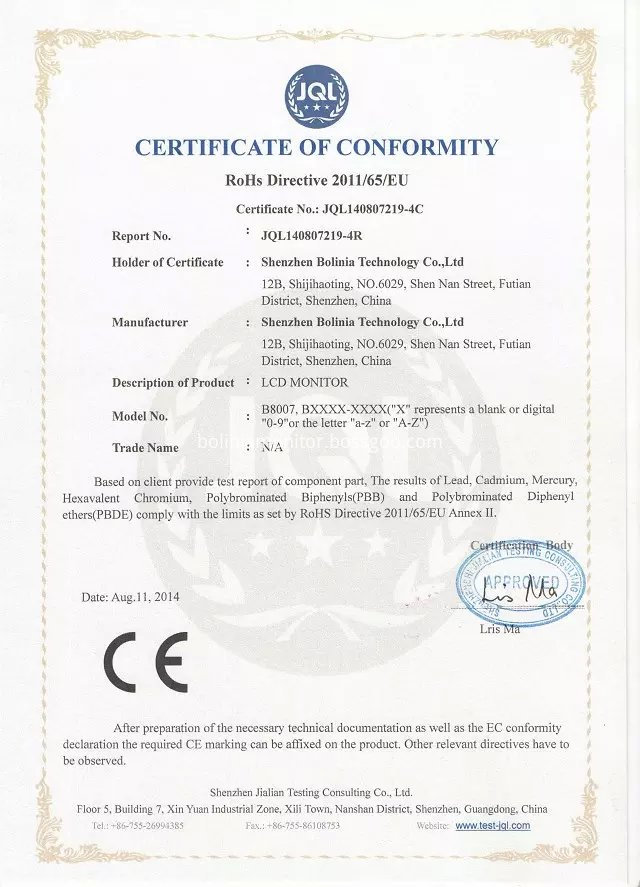
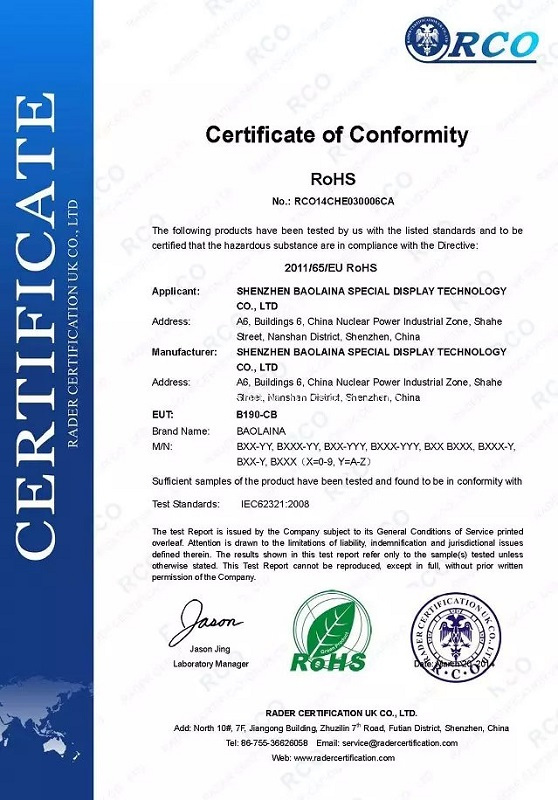
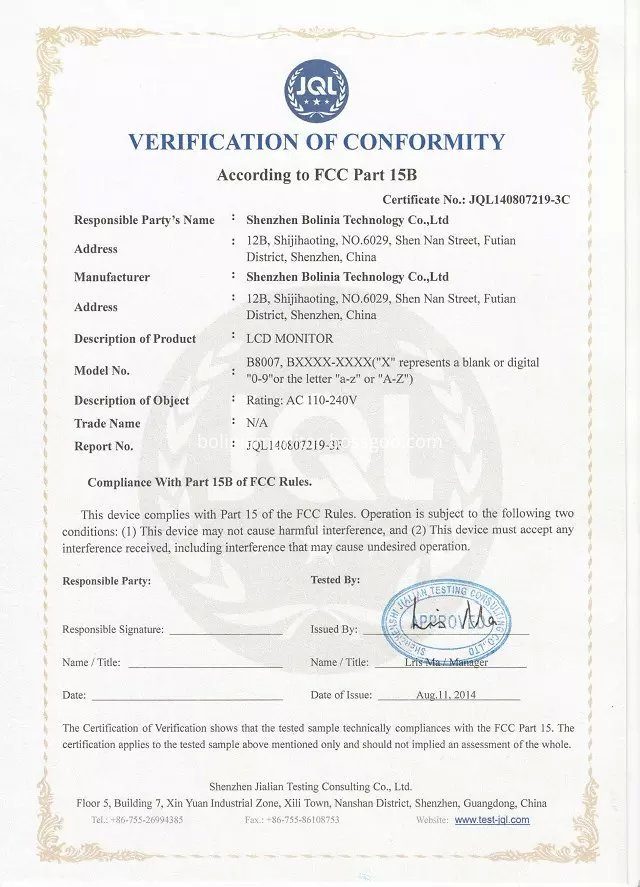

23.6 Inch All in One Touch PC
23.6 Inch All In One Touch PC,Touch PC 23.6 Inch,23.6 Inch Android Tablet,23.6 Inch Multi-Touch PC
Shenzhen Bolinia Technology Co., Ltd. , http://www.bolinia.com